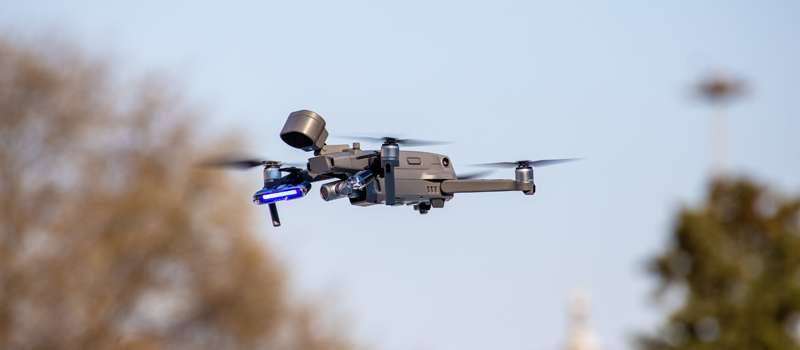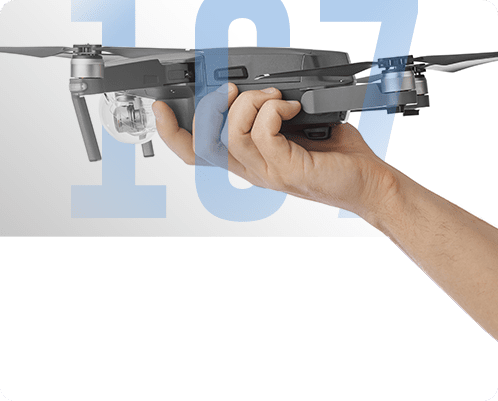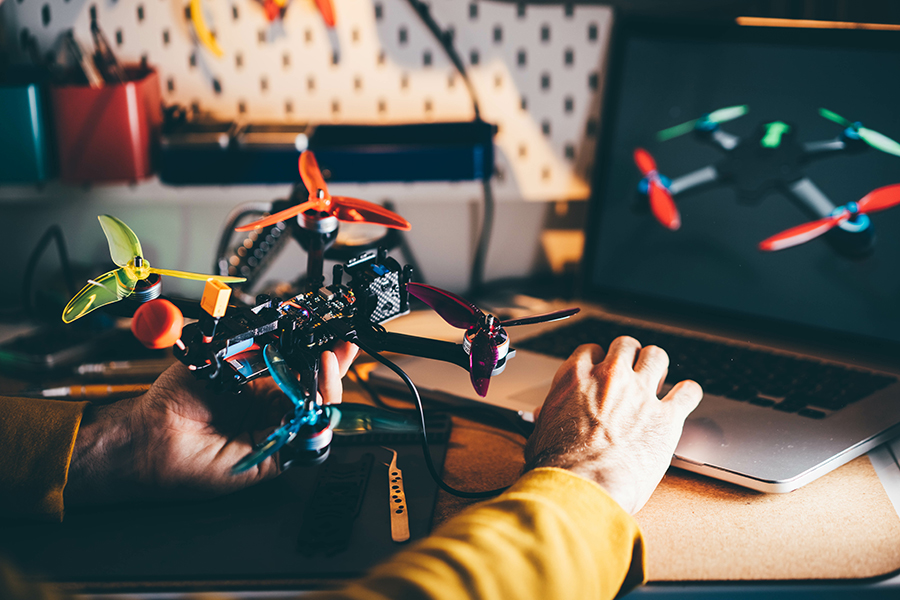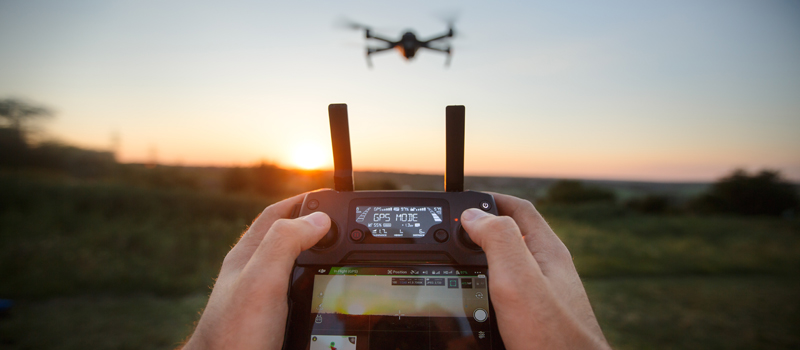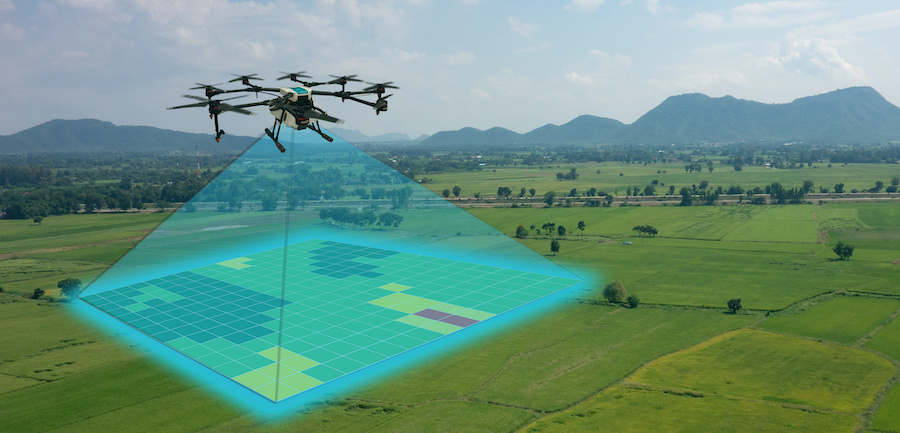-
Possible use cases
-
Pros and cons of creating a drone program
- PROS
- CONS
-
What hardware will you need?
- Battery life
- Obstacle avoidance
- Autonomous flight
- Long-range flight
- Imaging options
- Payload capacity and compatibility
- Training drones
- Leasing vs. purchasing
-
Compliance with regulations
- FAA COA
- Part 107 certification
- TBVLOS waivers
-
Final thoughts
From law enforcers to public planners and firefighters, it seems that the use of drones for public safety applications is becoming increasingly popular. According to a survey done by the Police Executive Research Forum (PERF) in 2018, 47% of police surveyed departments had already been using drones back then and another 34% expressed interest in adopting a drone program.
However, using drones for public safety will involve significant investment in terms of cost, time, and training. Are the benefits worth it? What should a public safety agency consider before they set about buying drone equipment?
Possible use cases
The growing trend of public safety use of drones is likely driven by successful stories of search and rescue missions or active shooter situations that have been resolved more efficiently and safely by drones.
Drones provide an incredible combination of accessibility, mobility, tactical advantage, and ease of deployment. Many of the benefits leveraged by the military during the early years of drone technology can now be useful in other situations. These are just some of the applications of drones for public welfare.
- There have been lots of cases of drones being used successfully in search and rescue operations. The biggest advantage of a drone is that it can provide a bird’s eye view of a search area without having to go through all the trouble of flying a manned aircraft. Drones can also be outfitted with thermal cameras for this function.
- Law enforcement agencies have started using drones to gain a tactical advantage in active shooter situations. This has allowed law enforcers to plan entry strategies without having to expose the officers unnecessarily to risk.
- Law enforcers have also used drones to monitor safety in massive crowd events such as festivals or football games.
- Drones can be used for the documentation of road accidents or crime scenes. A massive advantage of drones is that they can recreate such scenes as 3D models. These models can then be reviewed and scrutinized later on. In the case of road accidents, rapid scene documentation has reduced the need for road closures.
- Firefighters can use drones equipped with thermal cameras to identify active embers during a fire. Again, this provides firefighters with a tactical advantage that can help them more efficiently respond to a situation.
- Public utility companies can use drones to monitor or inspect critical infrastructures such as power lines, communications towers, or gas pipes. The advantage of drones is that they can do these inspection jobs much faster and safer than people on the ground.
- The recent pandemic has showcased how valuable drones can be as a tool for the rapid delivery of essential supplies. This concept has since been extended to the delivery of food, medicine, and other supplies to far-flung areas that cannot easily be accessed by ground vehicles.
With so many potential applications, it is no longer surprising that more public safety agencies are riding along with the hype of drone use. If you feel that drones can improve your agency’s routine operations, then the idea should be worth exploring.
Pros and cons of creating a drone program
For anyone looking into adopting drones into their agency’s operations, here is one sobering fact you should know – not all drone-based initiatives turn out successful. There have been times when departments or agencies get excited about buying drones only to have them end up collecting dust a year after. An old-fashioned pros and cons list can be a huge help in making this decision.
PROS
Quick to deploy
The advantage of an aerial perspective has always been recognized by law enforcers and other public safety agencies. In a major emergency, activating air support is usually one of the top priorities
The trouble with flying a manned aircraft like a helicopter is that it often involves a time-consuming process of securing airspace clearances and doing long pre-flight checklists. Although those pre-flight safety measures still apply to drone operations, they are usually quicker and logistically simpler.
Rapid response is one of the hallmarks of drone operations. If an accident happens, emergency response can have a drone on the site in less than five minutes. Data gathered by the drone can help responders be better prepared for when they arrive with the proper personnel and equipment.
May provide a safer alternative
Another crucial element of drone flight is that is unmanned. This means that the drone can be exposed to dangerous circumstances without presenting any risk to law enforcers or emergency responders.
There are lots of situations where this could be beneficial – forest fires, active shooter situations, or the inspection of high-rise facilities. With the advent of thermal imaging and high-resolution cameras, drones can provide detailed reconnaissance data on a situation even if the people themselves aren’t physically present.
Enhances the agency’s image
Despite being more widely used nowadays, drones still have some novelty in the public eye. Adopting drone technology has given public safety agencies the image of being forward-thinking and embracing emerging trends.
This does not mean that drone use does not have its detractors. There are certainly some people who have issues with the oversight capability and potential privacy violation of widespread drone use. However, the effect in terms of the public image generally trends in the net positive.
CONS
Costly to acquire and maintain
It’s easy to underestimate the cost of buying a drone for public safety use, but that’s only because commercial drones have gotten a lot cheaper in the last couple of years. However, public safety agencies may need to invest in more advanced equipment such as thermal cameras, high-powered transmitters, flight termination devices, and specialized sensors.
This also does not include recurring costs for the replacement of parts and supplies, software subscriptions, and periodic repair. Agencies will also have to spend on training or hire drone pilots and securing the necessary certifications.
Prices are decreasing though and drones can often reduce the number of manhours required for tasks. For instance, using drones to map accident sites can reduce the amount of time five-fold or more. Additionally, drones are much cheaper to operate and maintain than helicopters or airplanes.
Compliance with regulations will take a lot of work
The landscape of drone regulations has been in a seemingly constant state of flux since 2016. This isn’t necessarily a bad thing. Nowadays, the processes for securing the proper certifications and authorizations are a lot clearer. This applies as well to public safety agencies who wish to use drones for their regular operations.
However, this does not mean that it’s going to be easy. Applying for either Part 107 certification or an FAA COA under Part 91 is going to take a lot of time and effort. Documentation is typically a lot more demanding for public safety agencies and processing a certification request can take several weeks. Agencies operating under a Part 91 COA also need to provide monthly operations reports to the FAA. Again, this adds even more regular work for the agency.
The point is that adopting a drone program will take more than just buying the hardware. Months of work will have to go towards getting authorized by the FAA and building the proficiency of an agency’s drone operations crew.
May not always align with your agency’s goals
Before an agency makes a major move, it is worth taking a moment to assess just how valuable a drone can be for them. It is also important to take note of the limitations of drone flight. Depending on the circumstance, an agency may not be able to fly a drone over crowds, moving vehicles, beyond visual line of sight, or above a specific altitude threshold. Knowing these limits paints a more realistic picture of how useful drones can be for a public safety agency.
The FAA offers waivers that public safety agencies can obtain to overcome many of these operating limitations.
It is also worth noting that the advancement of drone technology has been impressively rapid in the last couple of years. An agency may not benefit from a drone now, but it may in the future when drones get even better features. In the coming years, drones will have longer flight times, higher payload capacities, better obstacle avoidance systems, and more autonomous capabilities. Waiting for the right moment in the cycle of technology development may help an agency avoid unmet expectations and wasted efforts.
What hardware will you need?
If a public safety agency were to decide to create a drone program today, they would be met with an overwhelmingly large set of choices for drones. This might make buying the right drone a bit more difficult. For those who want to narrow down their choices, these are the major factors to consider:
Battery life
Most drones are limited to flying for around 30 minutes before they have to land so that fresh batteries can be swapped in. If you can work with this time limit, then finding the right drone will be easy. There are also drones that can fly for up to 40 minutes or even more, but these are typically the larger, more expensive models.
Obstacle avoidance
If you’re responding to an emergency, the last thing you would want is for your drone to get into an accident and crash. To help avoid this, we recommend getting a drone with a very good obstacle avoidance system. Right now, the emerging technology for obstacle avoidance uses computer vision aided with AI. This allows the drone to generate a 3D model of its surroundings and create a flight path that will allow it to avoid any obstacles.
Autonomous flight
Is your agency planning to have the drone be piloted all the time? Or will it be advantageous to have the drones fly autonomously to a set destination? Autonomous flight is an emerging frontier in drone technology as it allows for almost immediate response. The reduced need for pilot intervention can be useful for routine operations, such as the regular delivery of essential supplies to health facilities.
Long-range flight
For the most part, drone operations are expected to be done within the range of visual line of sight. However, some circumstances call for longer drone flights. In such cases, long-range transmission technology will also have to be employed by the agency.
Cellular communication technology has been used to establish long-range communications with drones. In the past, this had to be done using network aggregation devices that can create a telecommunications path using multiple cellular networks. Nowadays, it is possible to buy drones with built-in 4G or 5G connectivity. These are still quite rare, but we expect this technology to become more common in the following years.
Imaging options
Whatever your imaging needs are, there is probably a drone that can handle it. Through the years, imaging and camera technology have become the focus of drone development. Nowadays, there is a great array of different imaging options – high-resolution cameras, high-framerate cameras, cameras with zoom lenses, thermal cameras, multispectral cameras, and LiDAR sensors.
Most mid-range commercial drones have permanent built-in cameras. If you want a drone that offers interchangeable cameras, you will likely have to spend significantly more.
Payload capacity and compatibility
In some cases, a drone will need to carry a payload such as supplies or medicine. This requires using a drone that can generate enough lift to carry more than its own weight. Again, these are typically the drones that are more expensive or those that have more than four rotors.
There are also some drones that have provisions for accessories that can be useful for public safety use. These can include strobe lights, spotlights, or speakers.
Training drones
An agency may need to buy high-end drones for their actual operations, but they also have the option to buy cheaper drones for training. Inexpensive ultra-portable drones are perfect for this. Training drones can be done to build the skill and confidence of pilots, as well as to test out tactics under certain scenarios. Since they are cheaper, training drones can be damaged without risking a valuable operational asset.
Leasing vs. purchasing
Public safety agencies may consider the possibility of leasing drones rather than purchasing them. This can be a good option for agencies that would rather not risk a huge capital expense for drone operations or are unsure about how the drone landscape will look in a couple of years.
Regardless of the type of drone your agency acquires, you will need to get hull insurance for it. This ensures that your organization can be protected from the financial expenses of having to repair or replace the drone should it get damaged. As high-end drones can cost up to $20,000, damage to an uninsured drone can be crippling for an organization.
Compliance with regulations
Another matter that agencies will need to deal with when adopting a drone program is legal compliance. Since 2016, the legal framework for drone regulations has become more robust and less ambiguous. It will still take a bit of work but the roadmap is now a lot clearer.
FAA COA
For agencies involved in public welfare, the FAA grants the privilege to apply for a Certificate of Approval (COA) based on Part 91 rules. 14 CFR Part 91 is not a law that is exclusive to drone flight – it is a set of operating and flight rules that apply to all civil and non-commercial aircraft.
The advantage of holding an FAA COA is that it can allow public safety agencies to conduct drone operations in conditions that would otherwise have been restricted. These can include unrestricted flight within controlled airspace or drone flight over crowds and moving vehicles.
Agencies that hold a COA may also have the authority to self-certify their drone pilots. This means that they can formulate their own training and certification procedures, eliminating the requirement to have their pilots get certified under the FAA.
There are two warnings for those who wish to fly under an FAA COA. The first is that it takes considerably more time and effort than Part 107 certification. The process is longer and requires more documentation covering details about the proposed operations, UAS equipment to be used, and the qualifications of UAS pilots. COA holders are also required to submit monthly reports to the FAA.
The second warning is the fact that agencies can only fly under a COA during actual Public Operations. This pertains to drone operations that are conducted by a duly recognized Public Agency as part of a government function. This means that a COA is not valid for training flights, flight demonstrations, or operations for publicity.
Most public safety agencies have a Certificate of Authorization and train their pilots under Part 107 to maximize their capabilities.
Part 107 certification
14 CFR Part 107 was implemented in 2016 as the legal framework for commercial drone flight. Although this certification is commonly used for paid drone work, drone pilots flying under a public safety agency can also choose to apply for it.
Agencies who choose to have their drone pilots certified under Part 107 will no longer need to come up with a self-certification procedure. However, doing periodic training sessions is still encouraged.
The biggest advantage of having Part 107 certification is it allows an agency to conduct drone operations under conditions that no longer fall within the authorization granted by the COA. The most commonly cited benefit of this is that agencies can do a trial or test flights. Having both an FAA COA and Part 107 certification is a very common strategy for public safety agencies.
TBVLOS waivers
A Tactical BVLOS waiver is a special waiver that is granted only to public safety agencies that already hold valid COAs. This waiver allows them to fly within the limits of visual line of sight in emergency situations. In comparison, BVLOS waivers are very rarely granted to Part 107 certificate holders.
The goal of having a TBVLOS waiver is not to extend the allowed distance between a drone and its ground station. Instead, it is only meant for flying around obstacles that can obscure visual contact between the drone and the pilot. Drone pilots are still expected to re-establish visual contact as soon as possible.
As is quite apparent from our COA roadmap, applying for an FAA COA can be a long and arduous process. Most of the work has to be done using the online COA Application System (CAPS). One encouraging fact we can offer is that the process gets easier the more you do it because the platform can retain many of the details you have provided in previous applications.
Final thoughts
Drones have proven to be one of the most sophisticated and effective new tools in the arena of public safety and welfare. From police enforcers to firefighters, there have been hundreds of accounts of emergency responders benefitting greatly from the use of drones.
Despite the benefits, there have also been cases of agencies acquiring drones yet never fully developing a drone program. This stresses the importance of proper planning and assessing if the organization’s objectives align with the potential benefits of using drones for their routine operations.
Starting a public safety drone program is expensive and takes a lot of work. However, the benefits are well worth the effort if the program is executed properly.
